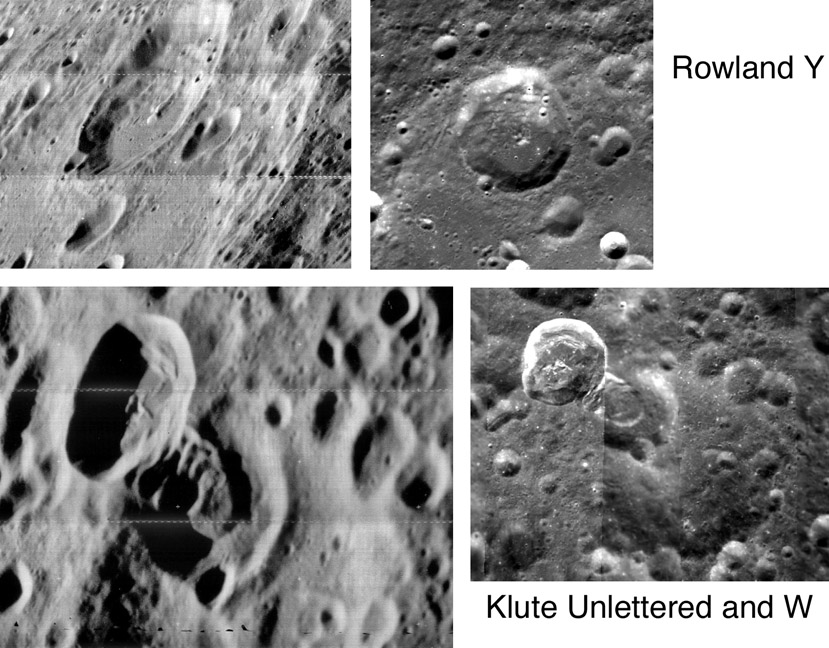
Clementine and Lunar Orbiiter V-028-h3 images from LPOD Photo Gallery, Cyberspace
While collecting Lunar Orbiter V images of farside craters for the-Moon Wiki I noticed a couple of extreme slumps due to craters forming on the rims of larger pre-existing craters. Rowland Y is a 54 km diameter crater whose northern rim is at the top of the rim of the 164 km wide Rowland. The oblique Orbiter view suggests that the northern wall of Y slid down the long slope and settled on the most of northern half of the floor. This probably happened as part of the modification phase of crater formation, when the walls of the new, deep hole in the ground collapsed inwards creating slumps or terraces. The second nearby mega-slump occurs in an unlettered crater on the northwest side of Klute (75 km diameter). The subsequent formation of Klute W (31 km) immediately to the NW of the unlettered crater caused a cascading collapse of wall material onto the unlettered’s floor. The Clementine image looks straight down on this, revealing it to have a rounded snout. This is a major landslide deposit of unusual shape. Its existence is probaably due to the unlettered crater forming on a rim slope and then having its NW wall shoved SE by the formation of W. Sort of like knocking over a row of dominoes.
Yesterday's LPOD: A Small Pix and a Short Story
Tomorrow's LPOD: Moon on Fire
COMMENTS?
Register, Log in, and join in the comments.



